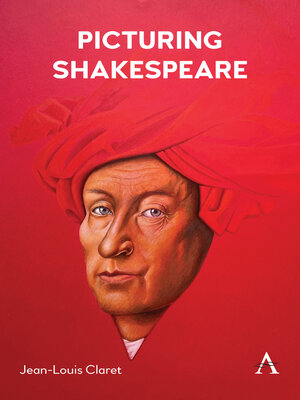Picturing Shakespeare
ebook ∣ Anthem Studies in Renaissance Literature and Culture
By Jean-Louis CLARET

Sign up to save your library
With an OverDrive account, you can save your favorite libraries for at-a-glance information about availability. Find out more about OverDrive accounts.
Find this title in Libby, the library reading app by OverDrive.



Search for a digital library with this title
Title found at these libraries:
| Library Name | Distance |
|---|---|
| Loading... |
This study investigates the capacity of Shakespeare's texts – obviously destined for stage performances – to generate images and mental colours in the readers' and in the spectators' minds. Such notions as Ut pictura poesis and the paragoneare discussed in the first part of this book, along with the function and nature of colours. After considering the sets of correspondences and the major differences between texts and images, the author presents and analyzes some of his own illustrations of Shakespearean characters. Jean-Louis Claret, both a university professor specialized in Shakespeare's theatre and an illustrator, proposes to shed light on the process that led him from the perusal of the written text to the visualization of visages. The voice of poets is unconventionally called upon to shed light on the complex mechanisms he describes.
|This study investigates the capacity of Shakespeare's texts – obviously destined for stage performances – to generate images and mental colours in the readers' and in the spectators' minds. Such notions as Ut pictura poesis and the paragoneare discussed in the first part of this book, along with the function and nature of colours. After discussing the sets of correspondences and the major differences between texts and images, the author presents and analyzes some of his own illustrations of Shakespearean characters. Jean-Louis Claret, both a university professor specialized in Shakespeare's theatre and an illustrator, proposes to shed light on the process that led him from the perusal of the written text to the visualization of visages. The voice of poets is unconventionally called upon to shed light on the complex mechanisms he describes.
The second part of this book deals with an analysis of the author's illustrations. As a university scholar, Jean-Louis Claret has naturally fed on literary criticism, but he tries nonetheless to put forth original approaches to Shakespeare. The use of poets' voices in his demonstration contributes to the development of an original and innovative contribution to Shakespearean criticism. The illustrator traces in the texts the sparks that his mind fanned into mental images which he strove in turn to make into visual pictures. He tries to determine how textual elements (the mention of colours, details, names, etc.) can generate visions, and he devotes special attention to the effect of sound correspondences and prosody.
Poetry is given pride of place in this book that focuses on the power of words and on the mechanisms of evocation that affect both readers and theatregoers.







